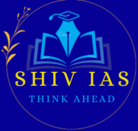- A 10th-century Kadamba inscription written in Kannada, Sanskrit recently discovered in the Mahadeva temple at Cacoda in southern Goa.

About the Inscription (Discovery and Study)
- It throws light on the Kadamba period in Goa and opens with an auspicious word ‘Be it well’ (Swasthi Shri).
- It was found lying in between the temples of Mahadev and Sateri-Betal at Cacoda in Goa.
Epigraphic Details:
- It records that when Talara Nevayya was administering the mandala, his son Gundayya having taken a vow to fulfil his father’s desire of capturing a gopura of the port of Goa, fought and died after fulfilling his father’s wish.
- Its epigraph is engraved in Kannada and Nagari characters.
- It is in the literary style of the Talangre inscription of Jayasimha I of the same period.
- Deciphering of the Kadamba stone inscription has highlighted the historical and socio-cultural importance.
Historical Narrative:
- The Kadambas of Goa were the subordinates of Chalukyas of Kalyana.
- Chalukyan emperor Tailapa II appointed Kadamba Shasthadeva as Mahamandaleshwara of Goa for his help in overthrowing the Rashtrakutas.
- Kadamba Shasthadeva conquered the Chandavara city in 960 A.D, and conquered the port of Gopakapattana (present Goa).
- It is believed that the Gundayya, son of Talara Nevayya, have participated in the battle, and won the port of Gopakapattana at the cost of his life.
- His father, Talara Nevayya, erected a memorial stone with the inscription in the temple of Mahadev of Cacoda to commemorate the heroic fight of his son.
Socio-cultural Importance:
- Cacora village lies in the vicinity of navigable waterways which connect to the Upper Ghat region through the ancient route of Diggi ghat leading to Karnataka.
- Cacoda, now a census town under the Municipality of Curchorem Cacora in Goa and it has the temple of the presiding deity Mahadev, with the affiliated deities of Betal, Dana Gaddi, Sidha, Bhumipurush, Paik, Vithal, Vagro and a shrine dedicated to Pir.
Who Founded Kadambas Dynasty?
Founded by Mayurasharma in or around 345 AD, the Kadambas were an ancient Karnataka royal dynasty that ruled over northern Karnataka and the Konkan region.
They coexisted with the Western Ganga Dynasty and established one of the region’s earliest autonomous kingdoms.
Major sources of Kadamba history:
- – Inscriptions like Talagunda, Gundanur, Chandravalli, Halasi, and Halmidi in Sanskrit and Kannada.
a. The Talagunda inscription: One of their earliest inscriptions recognizes Mayurasharma as the kingdom’s founder and explains the formation of the Kadamba monarchy.
Administrations:
- – Like the Satavahana kings, They too referred themselves as Dharma Maharajas.
– The Prime Minister (Pradhana), the Council Secretary (Tantrapala or Sabhakarya Sachiva), the Scholarly Elders (Vidyavriddhas), the Physician (Deshamatya), the Private secretary (Rahasyadhikritha), the Chief Secretary (Sarva Karyakarta), the Chief Justice (Dharmadhyaksha), and other officials (Bhojaka and Ayukta).
– Officers in the army included Jagadala, Dandanayaka, and Senapathi.
– Mandalas (Provinces) or Desha were used to partition the kingdom.
– Vishayas had been living in a Mandala (called districts).
Economy:
- – There have been nine Vishaya in the kingdom like Mahagramas (Taluk) and Dashagramas (Hobli) under a Vishaya .
a. Mahagrama had a greater number of villages than Dashagramas.
– Tax on one-sixth of land output was required.
– Perjunka (load tax), Vaddaravula (royal family social security tax), Bilkoda (sales tax), Kirukula (land tax), Pannaya (betel tax), and other professional charges on traders were among the levies imposed.
Architecture:
- – It includes unique features, with some similarities to the Chalukyan and Pallava styles and inspired by the Satavahana architectural tradition.
– The Kadamba Shikara is the most striking feature of their architecture.
Several decades later, that type of Shikara was adopted in the Doddagaddavalli Hoysala temple and the Mahakuta temples in Hampi.
Kadambas aided in the development of the later Chalukya-Hoysala architectural and sculpture styles. They erected the Madhukeshwara (Lord Shiva) temple at Banavasi.
Language:
- – The development of Kannada as a language of inscriptions goes to the Kadambas, the Gangas and the Badami Chalukyas.
– Inscriptions written in Sanskrit and Kannada are the main sources of Kadamba history.
The main content was in Sanskrit, and the boundary specifications were in Kannada in Halmidi stone inscription and the Tagare copper plates.
Religion:
- – The Kadambas were Vedic Hinduism.
– Mayurasharma, the founder of the dynasty, was a Brahmin by birth, but his heirs changed their surname to Varma to signify their Kshatriya rank.
– The horse sacrifice (Ashwamedha Yajna) was carried out by several Kadamba monarchs. Example: Krishna Varman.
– Talagunda inscriptions begin with a prayer to Lord Shiva, and Halmidi and Banavasi (inscriptions) begin with a prayer to Lord Vishnu.
Society:
- – The caste system was widespread, with the Brahmins and Kshatriyas at the top.
– The erection of memorial stones to honour the deceased hero was a unique feature of mediaeval Indian society (hero stone).
